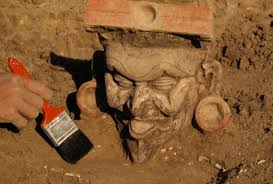
The ancient Egyptian civilization, with its remarkable achievements in architecture, art, and culture, has always fascinated historians and archaeologists. Yet, one of the most captivating aspects of Egypt’s history lies in its military prowess. The image of the pharaohs surrounded by soldiers in grand battle scenes has been etched in history, but understanding the true face of the ancient Egyptian army requires diving deeper into the daily lives, training, and strategies that made them such a formidable force in the ancient world.
The Role of the Army in Ancient Egypt
The military played a pivotal role in the survival and expansion of ancient Egypt. From the Old Kingdom to the New Kingdom, Egypt’s armies were tasked with defending the borders, maintaining internal order, and even expanding Egypt’s influence into neighboring regions. At the height of Egypt’s power during the New Kingdom (c. 1550–1070 BCE), the army was essential in establishing Egypt as a dominant power in the Mediterranean and Near Eastern world.
Unlike the citizen-soldiers of Greece or Rome, the ancient Egyptian army was a professional force, albeit one that often relied on conscription. Pharaohs such as Ramses II and Thutmose III are remembered for their military campaigns and the professional armies they built. However, most soldiers were peasants or commoners who were drafted when needed, although Egypt’s wealth allowed for a large standing army during times of war.
Structure and Organization of the Egyptian Military
The structure of the Egyptian military was complex, with distinct divisions and roles. The army was divided into infantry, archers, chariotry, and cavalry. Infantry made up the bulk of the force and were typically equipped with shields, spears, and swords. Archers, both foot and mounted, were highly prized for their ability to rain arrows upon enemies from a distance. The chariotry, consisting of light, fast chariots drawn by horses, was one of the key elements that set the Egyptian military apart from others in the ancient world, allowing them to move quickly on the battlefield and strike with precision.
The Egyptian military’s effectiveness lay in its highly disciplined organization. Officers were often drawn from the nobility and were responsible for maintaining control over their units. Training was rigorous, with soldiers practicing formations, weapon skills, and battlefield tactics. It’s believed that Egypt’s military also placed great importance on psychological warfare, often intimidating enemies with their impressive formations and battle strategies.
Warfare and Tactics: The Face of the Egyptian Army
The battle tactics employed by the ancient Egyptian army were a mix of well-organized formations and clever strategic planning. The pharaohs used their chariotry effectively, particularly during battles like the famous Battle of Kadesh (1274 BCE) against the Hittites. Though the battle ended in a stalemate, it highlighted the importance of chariots and their mobility in Egyptian warfare.
The army’s advanced tactics also included the use of elite troops for specialized missions. The Medjay, originally desert scouts, became a key part of Egypt’s military forces, often tasked with guarding vital locations and providing intelligence. Similarly, the Egyptian army also employed a range of foreign mercenaries, especially during the later periods, incorporating warriors from Nubia, Libya, and other parts of the ancient world.
Siege warfare also became an integral part of the Egyptian military’s strategies, especially when dealing with fortified cities. The Egyptians used siege towers, battering rams, and even psychological tactics to break through enemy defenses.
The Iconic Imagery of the Egyptian Soldier
Ancient Egyptian soldiers were often depicted in tomb paintings and temple reliefs, offering a glimpse into their appearance and role within society. These depictions show soldiers wearing linen kilts, helmets, and armor. The armor was often made of bronze or leather, designed to protect against arrows and melee combat. While the soldiers are often shown as idealized figures in art, with strong, muscular builds and perfect posture, these depictions reflect the idealized image of the soldier as a protector of Egypt.
In contrast, the real-life soldiers, especially those in the lower ranks, were likely less glorified. These men were often peasants who fought to defend their land or to gain rewards for their service. Nevertheless, their role in the military was crucial, and their training and participation in battles were seen as vital for Egypt’s survival and prosperity.
The Decline of the Egyptian Military
Over time, Egypt’s military fortunes began to change. The decline of Egypt’s power can be attributed to a combination of internal strife, economic challenges, and external threats. By the end of the New Kingdom, Egypt’s military was no longer the formidable force it once was. The empire shrank, and the army grew weaker, with less effective leadership and a reliance on mercenaries rather than professional soldiers.
The military might of Egypt gradually faded, but the legacy of the ancient Egyptian army endures. From the walls of temples and tombs to the accounts of battles that shaped the course of history, the ancient Egyptian military left a lasting imprint on the ancient world. The face of the Egyptian soldier—whether a chariot rider, archer, or infantryman—remains a symbol of strength, discipline, and the enduring spirit of Egypt’s military prowess.
To truly understand the face of the ancient Egyptian army, one must look beyond the grandiose depictions in tombs and temples. The soldiers of Egypt were the backbone of one of history’s most powerful civilizations, and their contributions to the empire’s successes were immense. Through their organization, tactics, and skills, they helped build an empire that lasted for millennia. While much of the daily lives of these soldiers remains shrouded in mystery, the enduring image of the Egyptian army continues to capture the imagination of historians and enthusiasts alike, offering a glimpse into the past and the soldiers who shaped the ancient world.
Leave a Reply